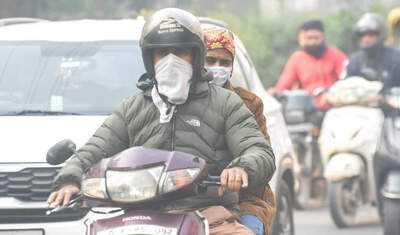Delhi is engulfed in another day of suffocating smog, as residents continue to breathe in toxic air with no sign of improvement in pollution levels. At 6 AM, the overall Air Quality Index (AQI) stood at 413, keeping the city in the 'severe' category for yet another day. The thick haze of pollutants has been lingering over the city for several days, significantly reducing visibility and posing serious health risks.
Pollution Levels Across Regions
According to data from the Central Pollution Control Board (CPCB), air quality in various parts of the city remains alarming:
- Anand Vihar: 438
- Bawana: 451
- Burari: 439
- Chandni Chowk: 449
- Dwarka Sector-8: 424
- IGI Airport Terminal-3: 395
- ITO: 433
- JLN Stadium: 421
- Lodhi Road: 304
- Mundka: 444
- Najafgarh: 388
- Okhla Phase-2: 410
- Pusa: 418
- RK Puram: 431
- Sonia Vihar: 434
- Wazirpur: 458
In neighboring areas, pollution levels are also concerning: Gurugram: 368, Noida: 404.
The CPCB classifies AQI levels as follows: 0-50 is 'Good', 51-100 is 'Satisfactory', 101-200 is 'Moderate', 201-300 is 'Poor', 301-400 is 'Very Poor', and 401-500 is 'Severe'.
Schools in Delhi-NCR Transition to Hybrid Mode
Due to the declining air quality, the Directorate of Education in Delhi has mandated that schools for grades up to 5 operate in a hybrid mode following the implementation of Phase III of the Graded Response Action Plan (GRAP). The notification states that heads of all government, government-aided, and recognized private schools must conduct classes in both physical and online formats until further notice.
Implementation of GRAP Phase III Restrictions
On Tuesday, the central government enforced stringent pollution control measures under Phase III of the GRAP after air quality reached 'severe' levels in Delhi-NCR. The Air Quality Management Commission reported that the average AQI rose from 362 on Monday to 425 on Tuesday morning due to calm winds and stable atmospheric conditions trapping pollutants near the surface.
Phase III restrictions include a ban on non-essential construction activities, as well as halting stone crushing and mining operations. Classes for grades up to 5 are advised to shift to hybrid mode, allowing parents and students to opt for online education where available. Additionally, the use of BS III petrol and BS IV diesel vehicles is restricted in Delhi and surrounding NCR districts, with exemptions for individuals with disabilities.
List of Restrictions Under GRAP Phase III
Under Phase III of GRAP, non-essential construction activities are prohibited. Classes for grades up to 5 must transition to hybrid mode, with parents and students having the option to choose online education where feasible.
Furthermore, the use of BS-III petrol and BS-IV diesel vehicles (four-wheelers) is restricted in Delhi and nearby NCR districts, although individuals with disabilities are exempt from this rule.
Restrictions also apply to non-essential diesel-operated medium goods vehicles that do not meet BS-IV standards in Delhi.
You may also like

Air India Express Mumbai-Varanasi flight lands safely after bomb threat

Facelift Trend: Why are people getting addicted to facelifts at a young age? Know why young people are getting plastic surgery done?

Uttarakhand govt clears 'Devbhoomi Parivar Yojana'

'Only in US can an Islamic immigrant...': Laura Loomer attacks Zohran Mamdani, says NYC mayor-elect should be 'denaturalized'

Design You Can Feel: ASUS Brings Emotion Back to Technology at Dubai Design Week 2025







